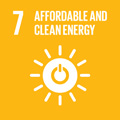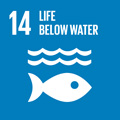- Docente: Barbara Mikac
- Credits: 6
- SSD: BIO/07
- Language: Italian
- Teaching Mode: In-person learning (entirely or partially)
- Campus: Ravenna
- Corso: First cycle degree programme (L) in Mediterranean History, Societies and Cultures (cod. 5974)
-
from Nov 10, 2025 to Dec 15, 2025
Learning outcomes
The course identifies peculiarities of the Mediterranean basin ecosystems which determined the definition of the “Mediterranean Type Ecosystems” (MTE). It analyses their structural characteristics, functional aspects, goods and services which they offer, and which contributed to prosper of the Mediterranean civilizations, putting in evidence also elements of their vulnerability. At the end of the course the student has knowledge on types, organization and distribution of MTE, he/she is able to identify ecosystem processes important for human and environmental wellbeing, is familiar with tools for the evaluation of the environmental quality and of the critical elements caused by human disturbance.
Course contents
The course will offer information on characteristics and global distribution of “Mediterranean Type Ecosystems” (MTE) and especially on the characteristics of terrestrial and marine ecosystems of the Mediterranean basin, their structural and functional aspects, goods and services which they offer and which contributed to the development of the Mediterranean civilizations. Particular attention will be paid to the past and current human impacts on Mediterranean ecosystems, which has led to their changes and degradation, and current tools for their protection. The course will treat following themes:
- Mediterranean type ecosystems (MTE): climatic and geographic aspects, global distribution, principal structural characteristics, functional aspects.
- Mediterranean basin: geography, geology and paleoclimatology; geological changes of the Mediterranean Sea.
- Terrestrial ecosystems of the Mediterranean basin: adaptations of plants, plant associations and principal terrestrial ecosystems, biodiversity, endemism, the importance of fire.
- Coastal and marine ecosystems of the Mediterranean basin: geography and chemical-physical characteristics of the Mediterranean Sea, principal coastal ecosystems, principal marine ecosystems.
- Ecosystem goods and services: definition, historical contest; types - provisioning, supporting, regulating and cultural services.
- Civilization development in the Mediterranean basin: human settlements, man-vegetation co-evolution, domestication of the edible plants and agriculture, urbanization and economic activities.
- Changes and degradation of Mediterranean ecosystems: pollution, erosion, fires, deforestation, non-native species, overfishing, effects of global climate changes, habitat degradation and loss, changes and disappearance of plant associations, soil degradation, changes and loss of biodiversity.
- Protection of Mediterranean ecosystems: regulations and legislations on international, national regional and local level; institutions for the protection of nature and environment, establishment of protected areas, promotion of the low impact economies, environmental education and scientific divulgation.
- Sustainable development: definition and historical context, sustainable development goals.
Readings/Bibliography
Bibliography obligatory for the preparation of the exam:
ANPA (2001) La biodiversità nella regione biogeografica mediterranea. Stato dell’Ambiente 4/2001. 1-147. ISBN 88-448-0047-0
Aschmann H. (1973) Distribution and Peculiarity of Mediterranean Ecosystems. In: Castri F., Mooney H.A. (eds) Mediterranean Type Ecosystems. Origin and structure. Ecological Studies, vol 7. Springer-Verlag, Berlin Heidelberg, 11-19.
Joffre, R., Rambal, S. (2002) Mediterranean Ecosystems. Encyclopaedia of life sciences. Macmillan Publishers Ltd, Nature Publishing Group, 1-7.
Lange, M. A. (2020). Climate change in the Mediterranean: environmental impacts and extreme events. IEMed: Mediterranean Yearbook, 30-45.
Martín-López, B., Oteros-Rozas, E., Cohen-Shacham, E., Santos-Martín, F., Nieto-Romero, M., Carvalho-Santos, C., ... & Cramer, W. (2016). Ecosystem services supplied by mediterranean basin ecosystems. In Routledge Handbook of Ecosystem Services (pp. 405-414). Routledge.
Minelli, A. (2009) Lagune, estuari e delta – Una frontiera fra mare e fiumi. Quaderni habitat. Museo Friulano di storia naturale, Udine, 78 pp.
Pignatti, S. (1986) The consequence of climate on the mediterranean vegetation. Annali di Botanica, 42, 123-130.
Pignatti, S. (1987) The relationships between natural vegetation and social system in the mediterranean basin. In: Miyawaki, A. et al. (eds) Vegetation ecology and creation of new environments, Tokai University Press, Tokyo, Japan, 35-45.
Pignatti, S. (1991) Man-environment relationships. The earliest phases of civilization. Biology Forum, 84 (1), 83-90.
Pusceddu A., Sarà G. e Viaroli P. (2020) Ecologia, ed. UTET Università, Italia, p. 362 (solo alcuni capitoli che saranno indicati agli studenti durante le lezioni)
Rick, T., Ontiveros, M. Á. C., Jerardino, A., Mariotti, A., Méndez, C., & Williams, A. N. (2020). Human-environmental interactions in Mediterranean climate regions from the Pleistocene to the Anthropocene. Anthropocene, 31, 100253.
Zeder, M. A. (2008). Domestication and early agriculture in the Mediterranean Basin: Origins, diffusion, and impact. Proceedings of the national Academy of Sciences, 105(33), 11597-11604.
Moreover, students will have to study from the power point presentations presented during the lessons, that will be available on Virtuale.
Additional bibliography will be used during the lessons and is adviced to students for the supplementary in-depth study:
Aschmann, H. (1973) Man’s impact on the several regions with mediterranean climates. In: Castri F., Mooney H.A. (eds) Mediterranean Type Ecosystems. Origin and structure. Ecological Studies, vol 7. Springer-Verlag, Berlin Heidelberg, 363-371.
Blondel, J., Aronson, J. (1995) Biodiversity and Ecosystem Function in the Mediterranean Basin: Human and Non-Human Determinants. In: Davis, G.W., Richardson, D.M. (Eds) Mediterranean-Type Ecosystems. The Function of Biodiversity. Ecological Studies, vol 109, Springer-Verlag, Berlin Heidelberg, 43–119.
Hobbs, R.J., Richardson, D.M., Davis, G.W. (1995) Mediterranean-Type Ecosystems: Opportunities and Constraints for Studying the Function of Biodiversity. In: Davis, G.W., Richardson, D.M. (Eds) Mediterranean-Type Ecosystems. The Function of Biodiversity. Ecological Studies, vol 109, Springer-Verlag, Berlin Heidelberg, 1–42.
Mannino, A.M., Balistreri, P. Deidun, A. (2017) The Marine Biodiversity of the Mediterranean Sea in a Changing Climate: The Impact of Biological Invasions. In: Fuerst-Bjeliš, B. (Ed) Mediterranean Identities - Environment, Society, Culture. IntechOpen Limited, London, 101-127.
Minelli, A. (2002) La macchia mediterranea. Formazioni sempreverdi costiere. Quaderni habitat, Ministero dell’Ambiente e della Tutela del Territorio, Museo Friulano di Storia Naturale, Udine, 1-73.
Mostafa, S., Baruch, B. Mediterranean Sea. Encyclopedia Britannica, 30 Aug. 2019, https://www.britannica.com/place/Mediterranean-Sea. Accessed 12 July 2022.
Pignatti, S. (1995) Biodiversità della vegetazione mediterranea. Atti dei Convegni Lincei, 115, 7-31.
Pignatti, s. (2003) The Mediterranean Ecosystem. Bocconea 16 (1), 29-40.
Raven, P.H. (1973) The Evolution of Mediterranean Floras. In: Castri F., Mooney H.A. (eds) Mediterranean Type Ecosystems. Origin and structure. Ecological Studies, vol 7. Springer-Verlag, Berlin Heidelberg, 213-224.
Rundel, P.W. (1998) Landscape Disturbance and Biodiversity in Mediterranean-Type Ecosystems: An overview. In: Rundel, P.W., Montenegro, G., Jaksic, F.M. (Eds) Landscape Disturbance and Biodiversity in Mediterranean-Type Ecosystems. Ecological Studies, Vol. 136, Springer-Verlag, Berlin Heidelberg, 3-22.
Trindade Lopes, H., Almeida, I. (2017) The Mediterranean: The Asian and African Roots of the Cradle of Civilization. In: Fuerst-Bjeliš, B. (Ed) Mediterranean Identities - Environment, Society, Culture. IntechOpen Limited, London, 3-25.
Eventual other relevant bibliography, used for the lessons and needed for the preparation of exam, will be indicated to students during the lessons.Teaching methods
The course will consist of lectures, student-led seminars based on the indicated readings, and case study discussions. Therefore, attendance is strongly recommended. Before some lectures, all students will be required to read in advance the texts indicated by the professor and prepare notes for the discussion. For the seminars, two or more students will prepare a class presentation for each seminar, based on the indicated topic and literature, accompanied by slides, lasting between 8 and 10 minutes. The presentations will form the basis for an open discussion to explore the emerging themes. During the lessons the professor will use Power Point presentations.
Assessment methods
Assessment consists of an oral exam on the topics accessed during the course and will include three questions. Where appropriate, students will be required to support their arguments with case studies analysed during lectures.
The final grade will be based on: the level of scientific and methodological depth of the topics covered, including connections with the case studies analysed during lectures; the ability to synthesize and critically analyse the arguments accessed during the course; the ability to make interdisciplinary connections; and the property of scientific language and exhibition quality.
The final grade will be given from 1 to 30.
Exam dates will be published on the AlmaEsami website. Students may register for exams exclusively using the methods provided by the AlmaEsami online system.Teaching tools
PowerPoint presentations, scientific articles, and chapters from the indicated textbook.
Students requiring specific services and adaptations to learning activities due to disabilities or specific learning disabilities (SLD) may contact the Service for students with disabilities and SLD [https://site.unibo.it/studenti-con-disabilita-e-dsa/en] directly to discuss the most appropriate arrangements.
Office hours
See the website of Barbara Mikac
SDGs




This teaching activity contributes to the achievement of the Sustainable Development Goals of the UN 2030 Agenda.
